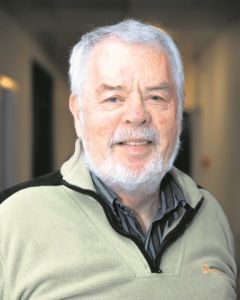Opinion
This Week’s Editorial: Greater Copenhagen investing big in its future
Ejvind Sandal
This article is more than 9 years old.

Ejvind Sandal, publisher and editor-in-chief
The MAX IV next-generation synchrotron radiation facility is scheduled to open in June 2016, while the European Spallation Source (ESS) is planned to be ready in 2020. When in operation, more than 500 staff and 5,000 researchers will work at this unique institute, which with broad international funding will open new insight into energy, health, climate, food and productivity.
It is also significant for the realism that has spurred on the mayors of Copenhagen and Malmö. They have considered the fact that a metropolis of 3-4 million people is a necessary prerequisite for attracting and retaining international talent while maintaining the competence required to be self sustaining. And 3.6 million is exactly what we have around here.
The buzz words are Greater Copenhagen and Scania. MAX IV is already visible in Lund/Scania and ESS is planned to be constructed in Lund and the Ballerup district of Copenhagen.
In Scania they have swallowed their pride and come to terms with the fact that decades after being established, the Øresund Bridge metropolitan development is still going Copenhagen’s way, while Scania is stalling. But a new drive for attracting international institutions and business is taking off now, with MAX IV and ESS leading the way.
Rapid growth
The cities themselves are also taking off. Tivoli is expanding and renovating next to the Central Station, which is getting a first floor automatic bicycle garage.Building over the tracks is also on the horizon with steam and smoke from the old locomotives set to soon disappear. Copenhagen Harbour is now practically a beach resort – that’s how clean the waters are. Billions are being invested. A recent survey showed that 30 central buildings valued at 4.8 billion kroner in 2014 were later sold at a 100 percent mark up.
A completely new profile development is in the works next to the Opera House and that old idiosyncrasy against high rises (nothing should be bigger than City Hall) is crumbling – as it has in Malmö long ago with the Turning Torso. More than 6 billion kroner will be invested in downtown development over the next two to five years.
Going global
But there is still much to be done. The acceptance of English as an official second language for one thing. Open border traffic is another, as is the harmonisation of residence and work permits – and tax arrangements.
About
Ejvind Sandal
Copenhagen Post editor-in-chief Ejvind Sandal has never been afraid to voice his opinion. In 1997 he was fired after a ten-year stint as the chief executive of Politiken for daring to suggest the newspaper merged with Jyllands-Posten. He then joined the J-P board in 2001, finally departing in 2003, the very year it merged with Politiken. He is also a former chairman of the football club Brøndby IF (2000-05) where he memorably refused to give Michael Laudrup a new contract prior to his hasty departure. A practising lawyer until 2014, Sandal is also the former chairman of Vestas Wind Systems and Axcel Industriinvestor. He has been the owner of the Copenhagen Post since 2000.










































